Online Photo Exhibition “Belarus Castles”
26.06.2023 г.***
Belarusian architecture has always been a great part of its national cultural heritage. Architecture monuments accumulate centuries of history and thousand years of traditions.
Respectable palaces, monumental castles, high-spirit cathedrals – all this is in one place at the geographical center of Europe – the Republic of Belarus.
The Embassy of Belarus in the Republic of Korea is very pleased to present the opportunity to experience Belarusian treasures through this Online Exhibition provided both in English and Korean versions.
벨라루스의 건축은 항상 국가 문화 유산의 큰 부분을 차지해왔다. 건축 기념물은 수백 년의 역사와 수천 년의 전통을 축적하기 때문이다.
건축학적으로 수준 높은 궁전과 고성들, 성스러운 정신이 남아있는 성당들 – 이 모든 것이 유럽의 지리적 중심에 있는 한 곳인 벨라루스 공화국에 있다.
주한 벨라루스대사관은 영어와 한국어 버전으로 제공되는 이번 온라인 전시회를 통해 벨라루스의 보물들을 경험할 수 있는 기회를 제공하게 되어 매우 기쁘게 생각한다.
***
Mir Castle
XVI c.
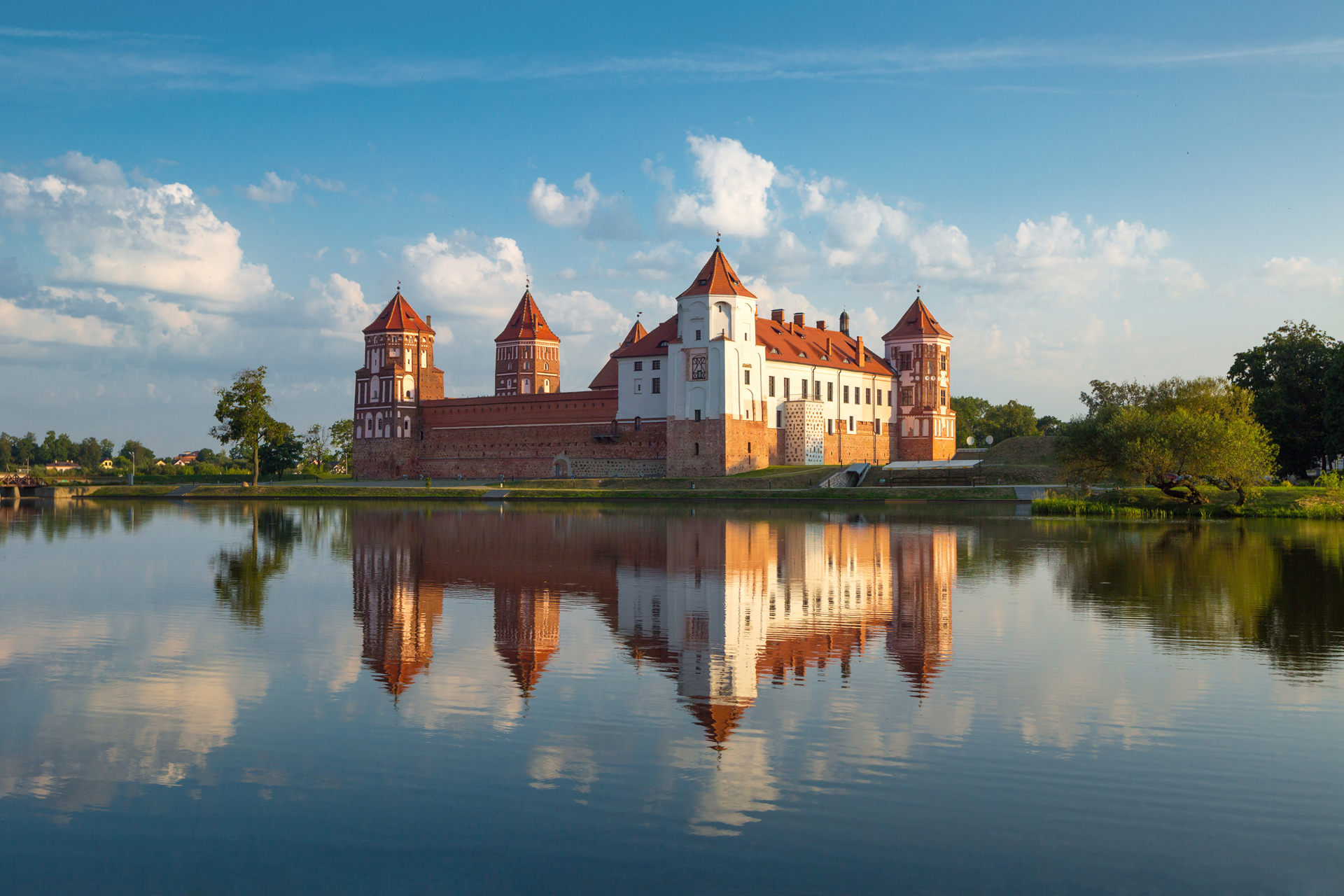
Mir Castle in Grodno region is one of the most important tourist attractions in Belarus, an outstanding 16th-century fortification and a UNESCO World Heritage site.
The Mir Castle complex (Mirsky Zamok) is an outstanding example of 16th-century fortification art. It’s located in the town of Mir in the Grodno region of Belarus.
The construction of this Belarus’ Gothic style castle was started in the 1520s by Duke Ilinich.
In 1568 the castle came into the hands of Mikolay Radziwil, who completed it in Renaissance style.
A three-storey palace was built along the eastern and northern walls of the castle which had forty fretted rooms. Earth walls were built around the castle with bastions at the corners, surrounded by a water moat.
An Italian garden was laid to the north of the walls and an artificial lake was established to the south. The Radziwills owned the castle for several centuries.
During the Napoleonic wars the castle was severely damaged.
In 1891, the castle is bought by Nikolai Svyatopolk-Mirsky who started bringing order to his new property. His son continued his father’s work, led by renowned architect Teodor Bursze.
A subsidiary of the National Art Museum of the Republic of Belarus was located in the castle in 1992.
그로드노(Grodno) 지역의 미르 성은 벨라루스에서 가장 중요한 관광 명소 중 하나이며, 뛰어난 16세기 요새이자 유네스코(UNESCO) 세계 문화 유산이다.
미르 성을 비롯한 다양한 건축물들로 구성된 미르 성 콤플렉스(complex)는 16세기 요새 예술의 뛰어난 예이다. 이 아름다운 미르 성은 벨라루스 공화국 그로드노 지역의 미르 마을에 위치해 있다.
벨라루스 고딕 양식 성곽의 대표적인 예시인 미르성의 건설은 1520년대 일리니히 공작에 의해 시작되었다.
1568년에 이 성은 미콜레이 라지윌(Radziwill)의 손에 넘어갔고, 그는 미르성을 르네상스 양식으로 완성했다.
성의 동쪽과 북쪽 벽을 따라 3층짜리 궁전과, 40개의 방이 건설되었다 . 성벽 둘레에는 보루가 있고, 그 주변은 해자로 둘러싸여 있다.
성벽의 북쪽에는 이탈리아식 정원이, 남쪽에는 인공 호수가 건설되었다. 라지윌 가문은 이후 몇 세기 동안 그 성을 소유했다.
이후 나폴레옹 전쟁 중에 미르 성은 심하게 훼손되었다.
1891년에 니콜라이 스뱌토폴크미르스키(Svyatopolk-Mirsk)가 이 성을 사들였다. 그의 아들은 유명한 건축가 테오도르 부르제가 이끄는 복원프로젝트를 이어갔다.
1992년, 벨라루스 국립미술관의 별관이 성 안에 건설되었다.

In 2000 UNESCO designated Mir Castle a World Cultural and Natural Heritage site.
Ball at opening ceremony of Mir Castle The successful blend of Gothic, Baroque and Renaissance architecture makes Mir Castle one of the most impressive castles in Europe.
Following intensive restoration works, Mir Castle was reopened to the public in December 2010.
Renovation works on the Mir Castle Complex, however, are still underway. The plans are to repair the Italian Renaissance Park, the English Park and the pond, to restore the Svyatopolk-Mirsky Castle. The restoration works on this historic landmark was completed in 2013.
2000년 유네스코는 미르 성은 세계 문화 자연 유산으로 지정되었다.
미르 성의 고딕양식의 건물을 시작으로 바로크, 이후 건설된 르네상스 건축의 성공적인 조화는 미르 성을 유럽에서 가장 인상적인 성 중 하나로 만들었다.
집중적인 복원 작업 끝에, 미르 성은 2010년 12월에 대중에게 다시 공개될 수 있었다.
그러나 미르 성 콤플렉스에 대한 보수 공사는 여전히 진행 중이다. 현재 보수공사의 목표는 성에 구성물이었던 이탈리아 르네상스 공원, 영국식 공원과 연못을 수리하는 것이다.
역사적 랜드마크인 미르성 자체의 복원 작업은 2013년에 완료되었다.
Experience Mir Castle via virtual 3D-tour!
Nesvizh Palace
XVI C.
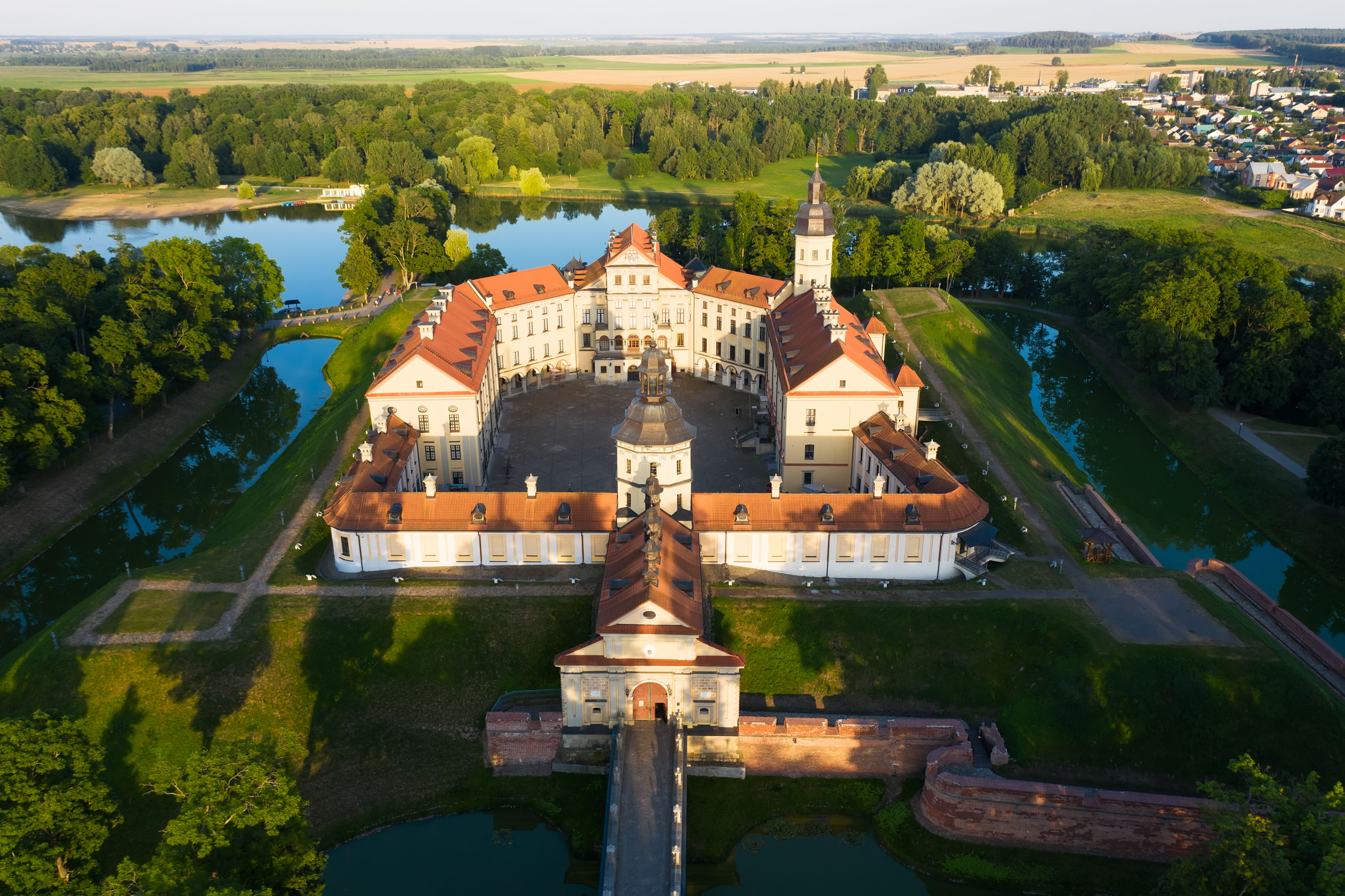
Nesvizh Palace is considered the country’s most beautiful palace by the people of Belarus. Its richly diverse architecture and attractive gardens make it one of the most popular tourist attractions in Belarus.
Nesvizh Palace is on the Nesvizh Estate, one of the oldest settlements and most famous places in Belarus. Nesvizh is in the Minsk region of Belarus, approximately 120km south-west of Minsk.
Nesvizh was named Belarus’ 2012 Capital of Culture. Nesvizh became the third Belarusian town after Polotsk and Gomel which had been given this honorary status.
The estate and town was acquired by the Radziwill family in the middle of the 16th century, and they stayed there until 1939 when they were expelled by the invading Red Army.
The foundation stone of Nesvizh Palace was laid in 1584. It was rebuilt many times and as a consequence has features of many architectural styles including: Renaissance, Baroque, Rococo, Classicism, Neo-gothic, Modernism
In 1770 Nesvizh Palace was seized by Russian forces and the Lithuanian Archive removed and sent to Saint Petersburg where it remains to this day. Much of the artwork was distributed among Russian nobility.
Nesvizh Palace after World War 2In the late 19th century Nesvizh Palace was restored by the Radziwil family who also designed one of largest landscape gardens in Europe on the estate.
After World War 2 Nesvizh Palace was used as a Sanatorium and the gardens became neglected.
In 1994 the estate was designated the national historical and cultural reserve and in 2006 it was added to the UNESCO World Heritage List.
네스비지 궁전은 벨라루스 사람들이 꼽은 가장 아름다운 궁전 중 하나로 불린다. 이곳은 풍부하고 다양한 건축물과 매력적인 정원으로 인해 벨라루스에서 가장 인기 있는 관광 명소 중 하나이기도 하다.
네스비지 궁전은 벨라루스에서 가장 오래된 정착지 중 하나이자 가장 유명한 장소 중 하나인 네스비지 영지에 있다. 이 지역은 벨라루스의 수도 민스크에서 남서쪽으로 약 120km 정도 떨어진 곳에 위치한다.
네스비지 지역은 벨라루스의 2012년 문화 수도로 선정되었다. 네스비지는 폴로츠크와 고멜에 이어 벨라루스의 세 번째 문화수도로 선정되었다.
이 영지와 마을은 16세기 중반에 라지윌 가문에 의해 소유되었고, 그들이 붉은 군대에 의해 추방된 1939년까지 이 가문은 이곳에 머물렀다.
네스비지 궁전의 주춧돌은 1584년에 세워졌다. 오랜 역사와 더불어 이 궁전은 르네상스, 바로크, 로코코, 고전주의, 신고딕, 모더니즘 등 많은 건축 양식의 특징을 가지고 있다
1770년 네스비지 궁전은 러시아군에 의해 점령되었고 이곳에 있던 리투아니아 기록보관소는 러시아 상트페테르부르크로 보내져 현재까지 남아있다. 이 작품의 대부분은 러시아 귀족들 사이에서 배포되었다.
제2차 세계 대전 이후 네스비지 궁전은 19세기 후반에 유럽에서 가장 큰 정원 중 하나를 설계하기도 한 라디윌 가족에 의해 복원되었다.
제2차 세계 대전 이후 네스비지 궁전은 요양원으로 사용되었고 정원은 방치되었다.
1994년에 이곳은 국립역사문화보호구역으로 지정되었고, 2006년에 유네스코 세계문화유산에 등재되었다.
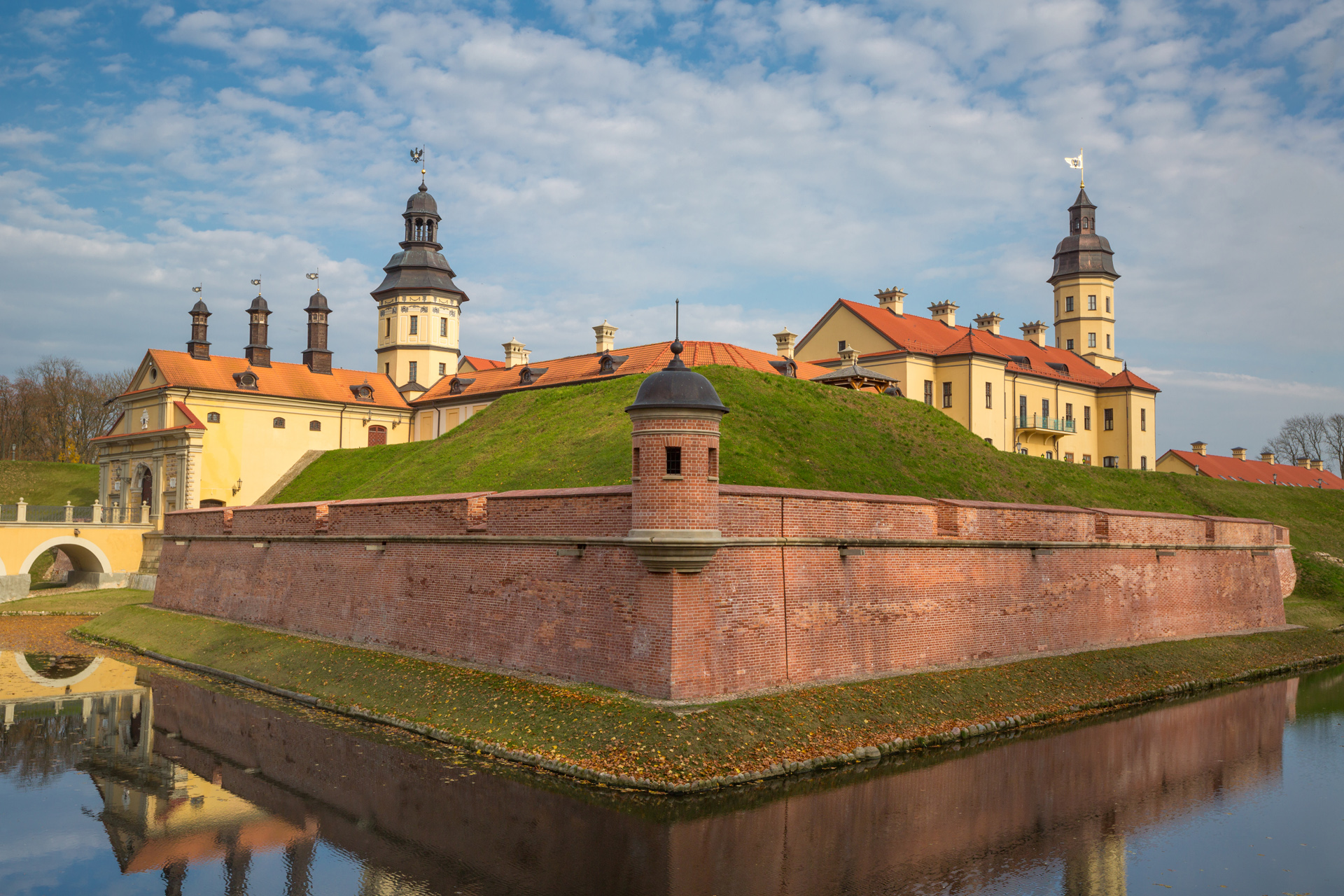
Nesvizh Palace is considered the most beautiful palace in Belarus and attracts thousands of visitors every year. The gardens are a particular attraction, with ornamental lakes, and beautifully landscaped gardens.
Nesvizh Palace went through an extensive renovation programme to restore it to its former glory.
After intensive restoration works (since 2004), Nesvizh Palace reopened its doors for visitors in June 2012.
네스비지 궁전은 벨로루시에서 가장 아름다운 궁전으로 여겨지며 매년 수천 명의 방문객들을 끌어 모으고 있다. 그곳의 정원들은 미학적인 호수들과 아름답게 조경된 정원들이 있는 특별한 명소이기 때문이다.
네스비지 궁전은 이전의 영광을 되찾기 위해 대대적인 보수 프로그램을 거쳤다.
2004년부터 집중적인 복구 작업을 거쳤으며 2012년 6월에 네스비지 궁전이 재개장되었다.
Grodno Castles
XIV c. & XVIII
Dubbed as the architectural gems of Grodno, one of the most beautiful cities in Europe, the Old Castle and the New Castle rise high on the right bank of the Neman River. They witnessed landmark meetings, high-profile political events and luxurious balls, and hosted outstanding figures of various times. Today they are in the top 10 most visited sights of Belarus.
유럽에서 가장 아름다운 도시 중 하나인 그로드노의 건축학적 보석으로 불리는 올드 캐슬과 뉴 캐슬은 네만 강의 오른쪽 둑에 높이 솟아 있다. 그곳에서는 역사적인 회의나 정치 행사, 호화로운 무도회 등이 개최되었고 다양한 시대의 뛰어난 인재들이 이곳에 머물렀다. 오늘날 이곳은 벨라루스에서 가장 많은 관광객이 방문하는 10대 관광지 중 하나이다.
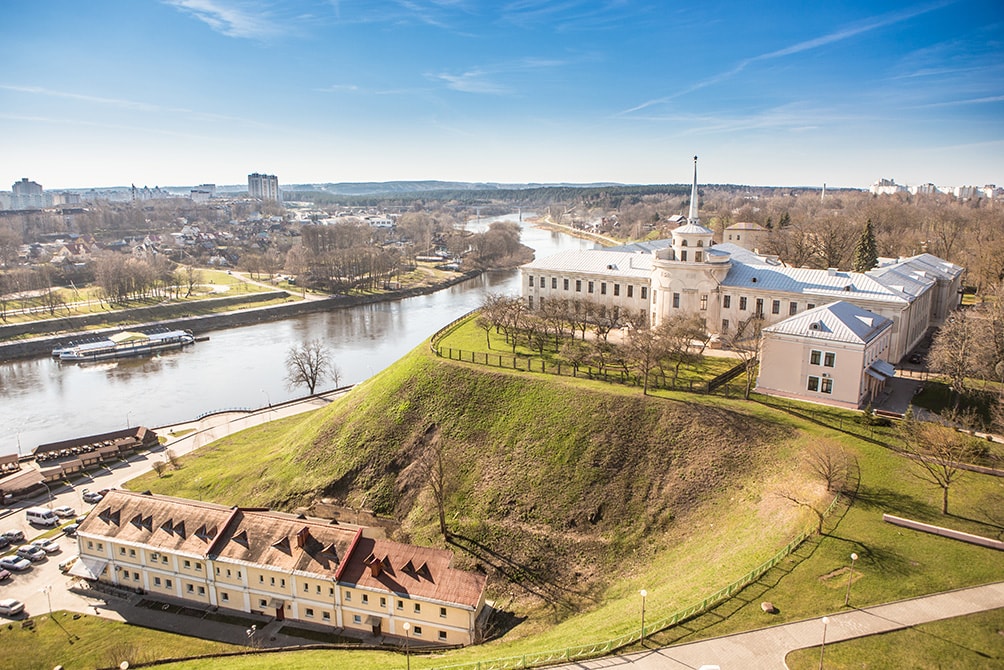
Old Castle
XIV c.
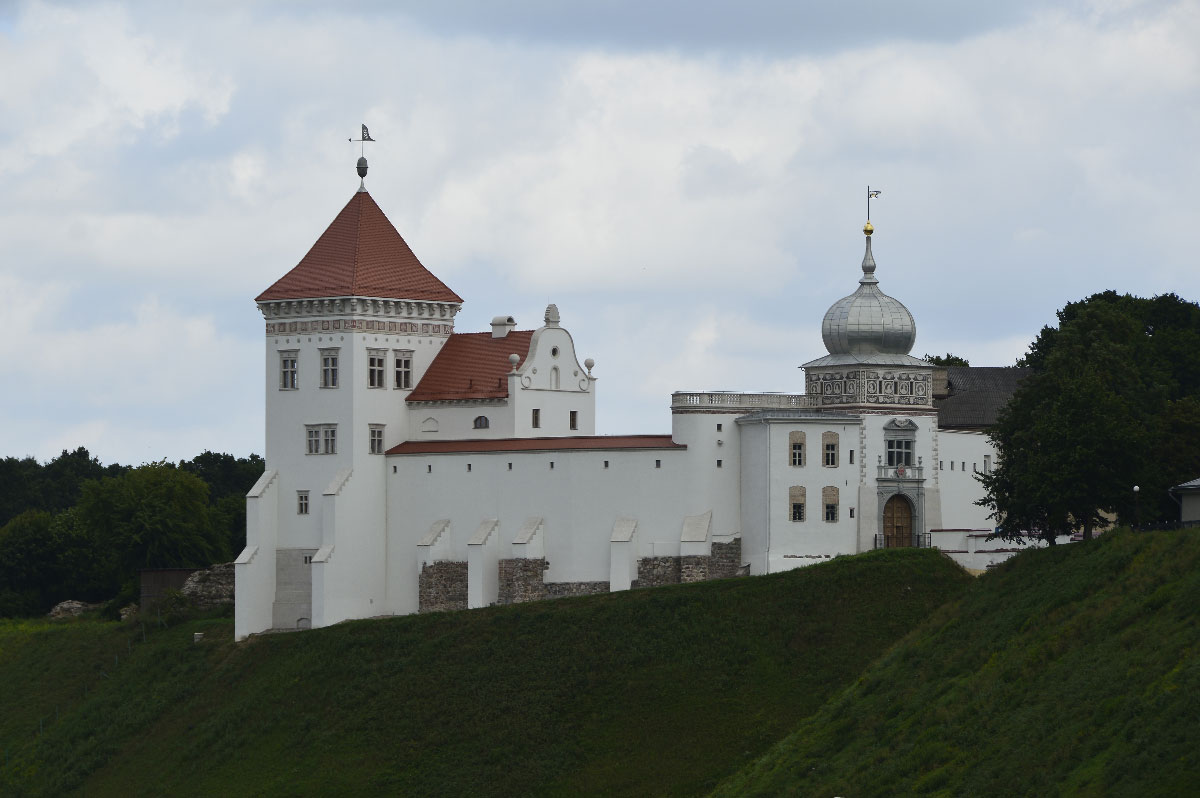
The history of the castle in Grodno began many centuries ago. In the 12th century, Grodno was the center of a principality with a defensive fortress surrounded by a moat and a ravine. In the 14th century, Grand Duke of Lithuania Vitaut had his residence built on the ancient Zamkovaya Gora (Castle Hill) and its story is inextricably linked with the life of the legendary ruler.
It would not be an overstatement to say that the renewed exposition is unique. Most of the valuables were put on display in 2021, including artifacts found during the digs on Castle Hill.
그로드노 성의 역사는 수세기 전에 시작되었다. 12세기에 그로드노는 해자와 협곡으로 둘러싸인 방어 요새가 있는 공국의 중심이었다. 14세기에 리투아니아 대공국의 비타우는 고대의 잠코바야 고라(캐슬 힐)에 그의 저택을 지었고, 그 이야기는 전설적인 통치자의 삶과 불가분의 관계가 있다.
이곳의 새로운 전시품은 독특하다 해도 과언이 아닐 것이다. 귀중품 대부분은 2021년에 전시되었으며, 캐슬 힐 발굴 과정에서 발견된 유물들도 포함한다.
New Castle
XVIII c.
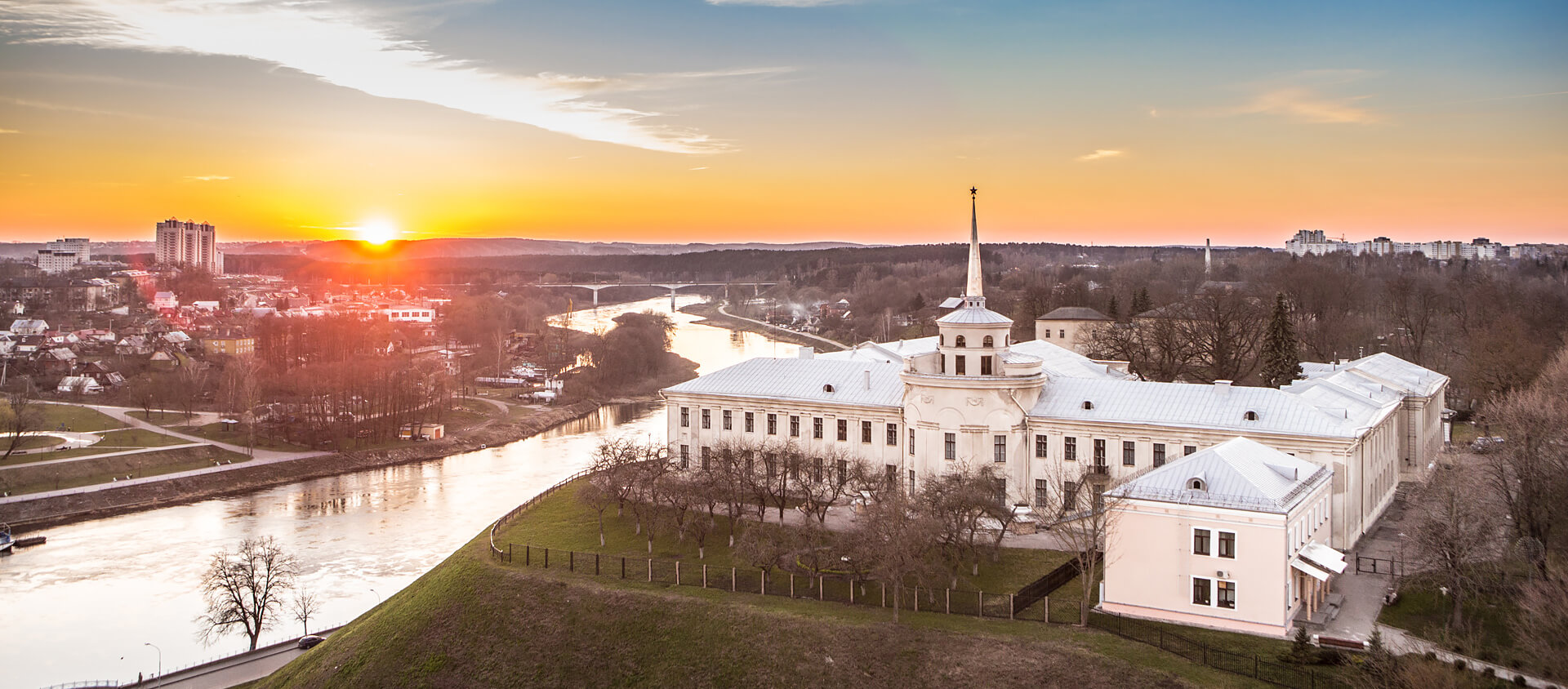
The New Castle is another royal residence located in Grodno. Built in the 18th century, this palace played a remarkable role in the history of Europe. Over the time it came to be known as the New Castle in contrast to the Old Castle located nearby.
Now the premises of the New Castle have been converted into exhibition halls and storerooms. The historical layout, even after a rather liberal reconstruction in the 1950s, has partially remained unchanged. Visitors of the former royal residence can see the following permanent exhibitions: New Castle. Events and Fate; Ancient Monuments of the Neman Lands; History of Grodno Oblast in the 19th-20th Centuries; Grodno Oblast during the Great Patriotic War; Hall of Memory of Peacekeeping Soldiers; World of Nature and etc.
뉴캐슬은 그로드노에 위치한 또 다른 왕실 거주지이다. 18세기에 지어진 이 궁전은 유럽 역사에서 주목할 만한 역할을 했다. 시간이 흐르면서 근처에 위치한 옛 성(올드 캐슬)과는 대조되는 새로운 성(뉴캐슬)으로 알려지게 되었다.
현재 뉴캐슬의 부지는 전시장과 창고로 바뀌었다. 1950년대 다소 진보적인 재건 이후에도 역사적 배치는 부분적으로 변경되지 않았다. 이곳을 방문하는 관람객들은 다음과 같은 상설 전시회를 볼 수 있다: ‘뉴캐슬; 사건과 운명’, ‘네만 땅의 고대 기념물’, ‘19-20세기 그로드노 주의 역사’, ‘대애국전쟁 당시의 그로드노 주’, ‘평화유지군 기념관’, ‘자연의 세계’
Brest Fortress
XIX c.
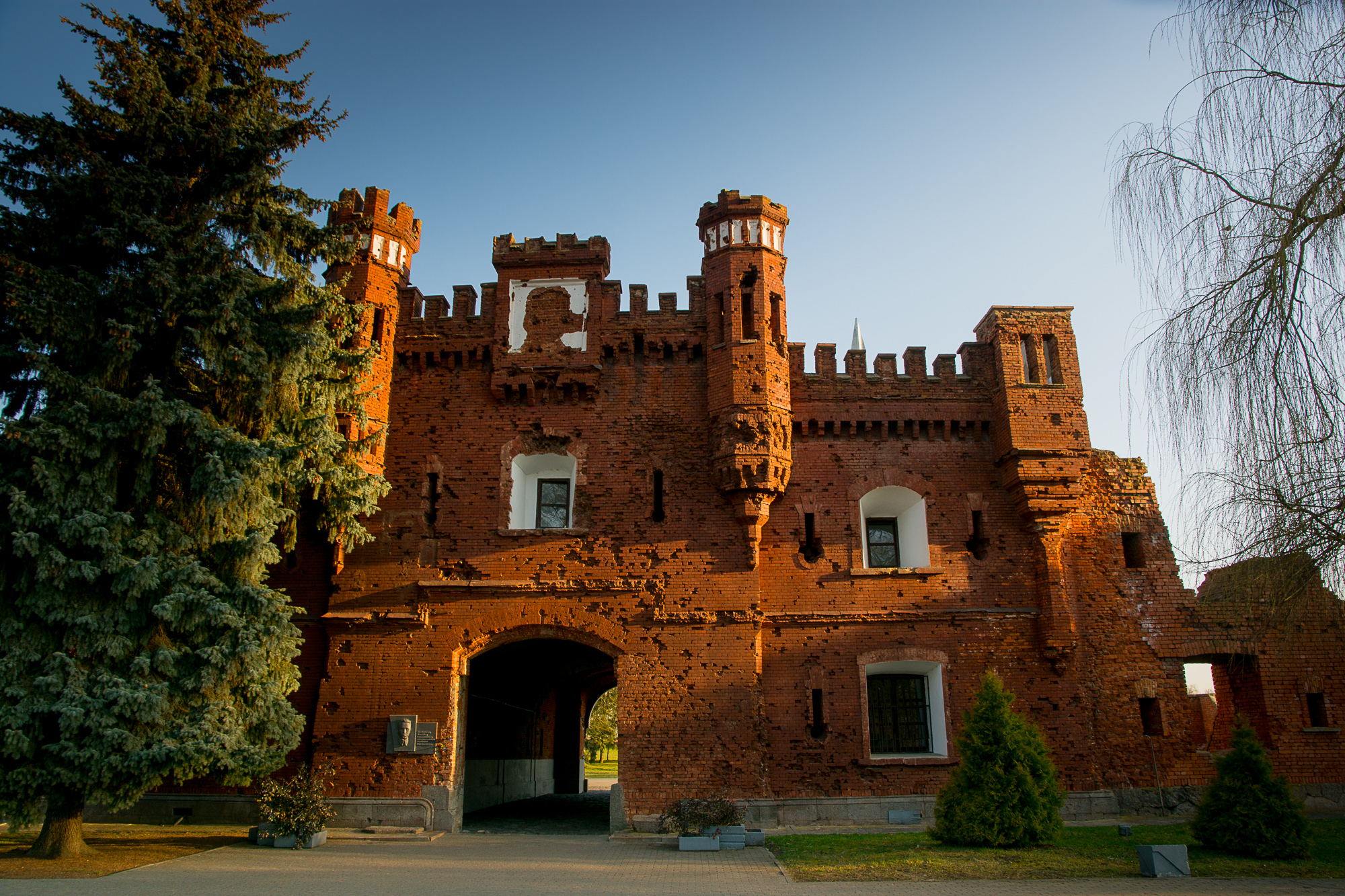
Brest Fortress, one of the most important places in Belarus, dates back to the 19th century and became a key symbol of Soviet resistance in World War 2.
Brest Fortress was built in the 1830s-early 1840s at the meeting-point of the rivers Bug and Mukhavyets. During construction, the entire town was relocated to a new position 2km away. St Nicolas Church was built in 1851-1876. Much of it was severely damaged during World War 2.
The site occupies more than four square km, although many of the outer defenses were damaged or destroyed during the wars of the 20th century.
There is a citadel at the center of the fortress, linked to three artificial island fortifications by bridgeheads: Kobrin fortification (north-eastern side); Terespol fortification (western island); Volyn fortification (south-eastern island)
In 1939 Brest Fortress was assigned to the Soviet Union. It earned the title of Hero Fortress for the courage demonstrated by Soviet soldiers when they fought against the German army in 1941. Whilst the Nazis took the town of Brest – 90% of which was destroyed in the fighting – the two regiments garrisoned inside the fortress held out.
For the people of Belarus, Brest Fortress remains a famous symbol of the Soviet resistance during World war 2.
벨라루스에서 가장 중요한 장소 중 하나인 브레스트 요새의 역사는 19세기로 거슬러 올라가며, 2차 세계대전 중 소련인민 저항의 핵심 상징이 되었다.
브레스트 요새는 1830년대에서 1840년대 초에 버그 강과 무카비예트 강이 만나는 지점에 지어졌다. 공사 중에 마을 전체가 2km 떨어진 새로운 위치로 이전되었다. 이곳에 있는 성 니콜라스 교회는 1851-1876년에 지어졌다. 아쉽게도 이 교회의 많은 부분은이2차 세계대전 동안 심하게 손상되었다.
이 유적지는 4평방 킬로미터 이상을 차지하고 있지만, 20세기 전쟁 동안 많은 외부 방어물이 손상되거나 파괴되었다.
요새의 중앙에는 성채가 있는데, 교두보로 세 개의 인공 섬 요새인 코브린 요새(북동쪽); 테레스폴 요새(서부 섬); 볼린 요새 (남동쪽 섬) 와 연결되어 있다.
1939년 브레스트 요새는 소비에트 정부에 양도되었다. 1941년 이곳에서 소련군이 독일군에 맞서 싸울 때 보여준 용기로 영웅 요새라는 칭호를 얻었다. 나치가 브레스트 마을을 점령하는 동안 요새 안에 주둔하고 있던 2개 연대는 용감히 저항했다.
벨라루스 사람들에게, 브레스트 요새는 2차 세계 대전 동안 소련인민 저항의 유명한 상징으로 남아 있다.
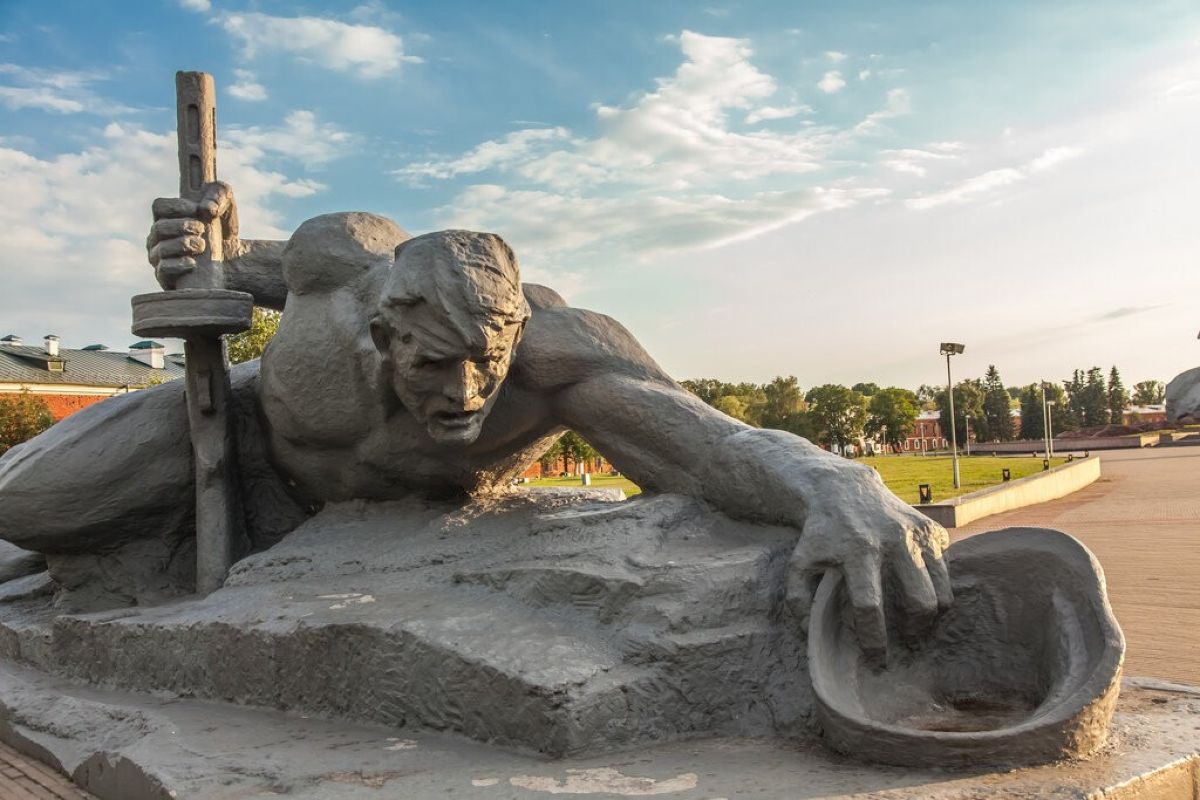
Brest Fortress is one of the most important places to see in Belarus and by far the largest tourist attraction in Brest.The fortress was not rebuilt at the end of the war, but instead became a shrine to the terrible and heroic events that took place there. The entry of the fortress represents a huge star cut into a concrete block. The radio announcer informs about the invasion of the German army.
The main part of the memorial is the Square of Ceremonies, leading to the Museum of the Defence of Brest fortress and the ruins of the White Palace. The Bayonet Obelisk, 100m high, can be seen from any part of the fortress, and is linked to the main Courage monument by 3 rows of tombstones. Only 216 of the 850 defenders who died here are known.
The Courage monument stands 33.5m high and tells the story of the heroic defence of the fortress through a series of carvings. There is an eternal flame which is guarded by 4 teenagers from the Pioneers Corps.
브레스트 요새는 벨라루스에서 볼 수 있는 가장 중요한 장소 중 하나이며, 브레스트에서 가장 큰 관광 명소이다. 이 요새는 전쟁이 끝났음에도 재건되지 않았고 오히려 그곳에서 일어난 끔찍하고 영웅적인 사건들의 성지가 되었다. 그 요새의 입구는 콘크리트 블록으로 잘려진 거대한 별을 나타낸다. 이곳에서 안내방송은 독일군의 침공에 대해 알려주는 방송이 나오며 당시를 회상시킨다.
기념비의 주요 부분은 브레스트 요새 방어 박물관과 화이트 궁전 유적으로 이어지는 의식의 광장이다. 높이 100m의 바요넷 오벨리스크는 성곽 어느 곳에서나 볼 수 있으며, 3열의 묘비로 주 용기 기념비와 연결되어 있다. 이곳에서 사망한 850명의 수비수 중 216명만이 알려져 있다.
용기 기념비는 33.5m 높이에 있으며 일련의 조각을 통해 성을 지키는 영웅적인 이야기를 들려준다. 개척자 군단의 4명의 청소년들이 지키는 영원한 불꽃이 있다.
Lida Castle
XIV c.
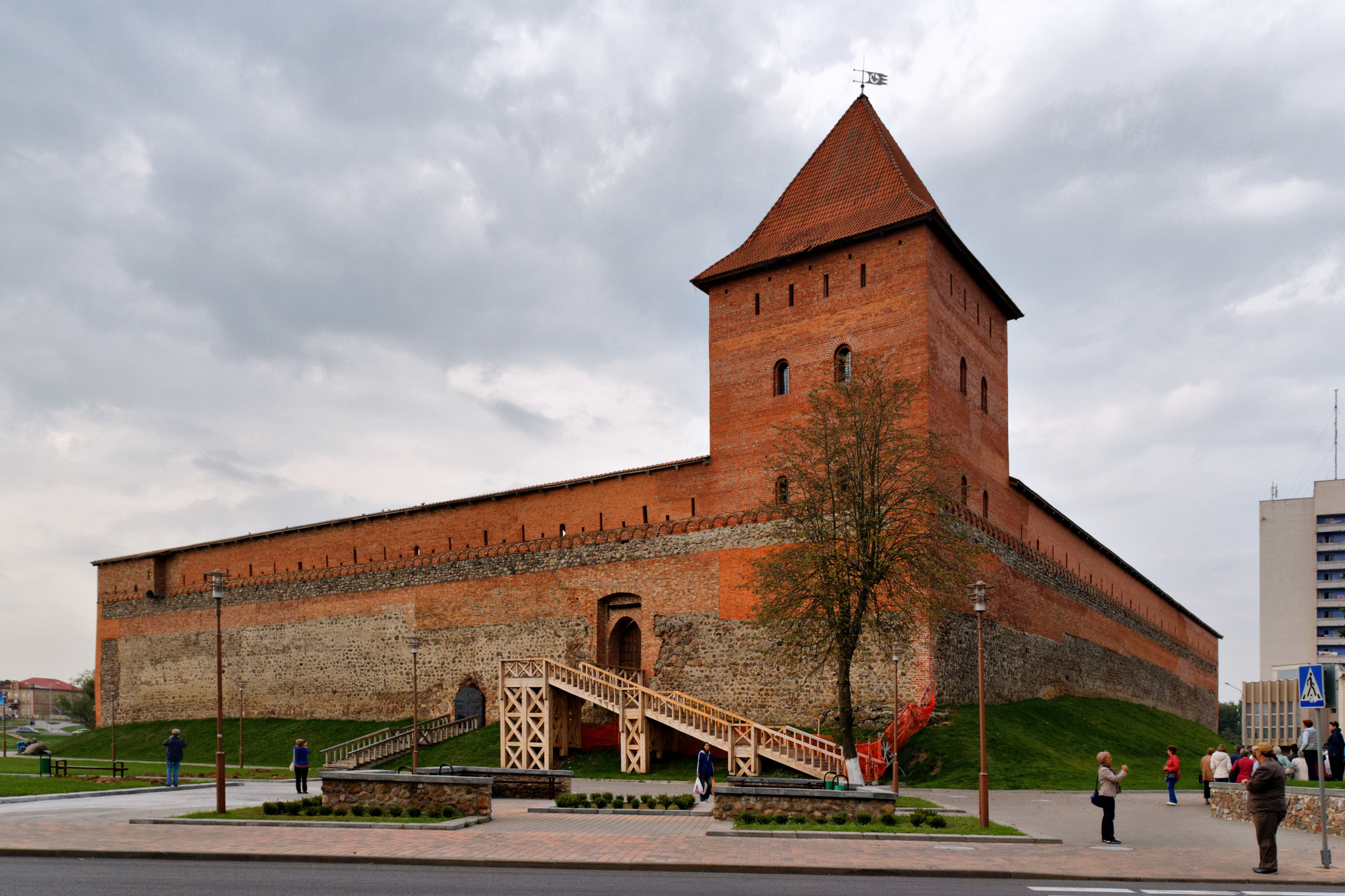
Medieval Lida castle, a fine archeological monument that is officially protected by the state, lies 112km north-east of Grodno in the Grodno region of Belarus.
Lida Castle (Lidskiy zamok) was built in the early 14th century by Grand Duke Gediminas of Lithuania.
Famously built on sand, Lida Castle has withstood 7 centuries of battles and occupations of the surrounding land.
Lida Castle is similar in layout to another famous place in Belarus, Mir Castle. Boulder walls constructed in the early 14th century were later faced with red brick.
The castle dominates the town of Lida, which was badly damaged in a fire in 1891. Stones from the south-western tower and parts of the western wall of the castle were used to repair fire-damaged houses.
In the 1920s work began to restore some of the castle walls. On January 22, 1940 the Castle of Lida was awarded the status of an archeological monument and in 1953 the castle was taken under state protection.
국가가 공식적으로 보호하고 있는 훌륭한 고고학적 기념물인 중세 리다 성은 벨라루스 그로드노 지역의 그로드노 시에서 북동쪽으로 112km 떨어진 곳에 있다.
리다 성은 14세기 초 리투아니아의 게디미나스(Gediminas)대공에 의해 지어졌다.
모래 위에 지어진 것으로 유명한 리다 성은 7세기 동안 주변 땅의 전투와 점령을 견뎌냈다.
리다 성은 벨라루스의 또 다른 유명한 장소인 미르 성과 배치가 비슷하다. 14세기 초에 지어진 볼더(Boulder) 벽은 나중에 붉은 벽돌로 만들어졌다.
이 성은 1891년 화재로 큰 피해를 입은 리다 마을을 둘러싸고 있다. 남서쪽 탑의 돌과 서쪽 성벽의 일부는 화재로 손상된 집을 수리하는 데 사용되었다.
1920년대에 성벽의 일부를 복원하는 작업이 시작되었다. 1940년 1월 22일, 리다 성은 고고학적 기념물로 지정되었고 1953년에는 국가의 보호를 받게 되었다.
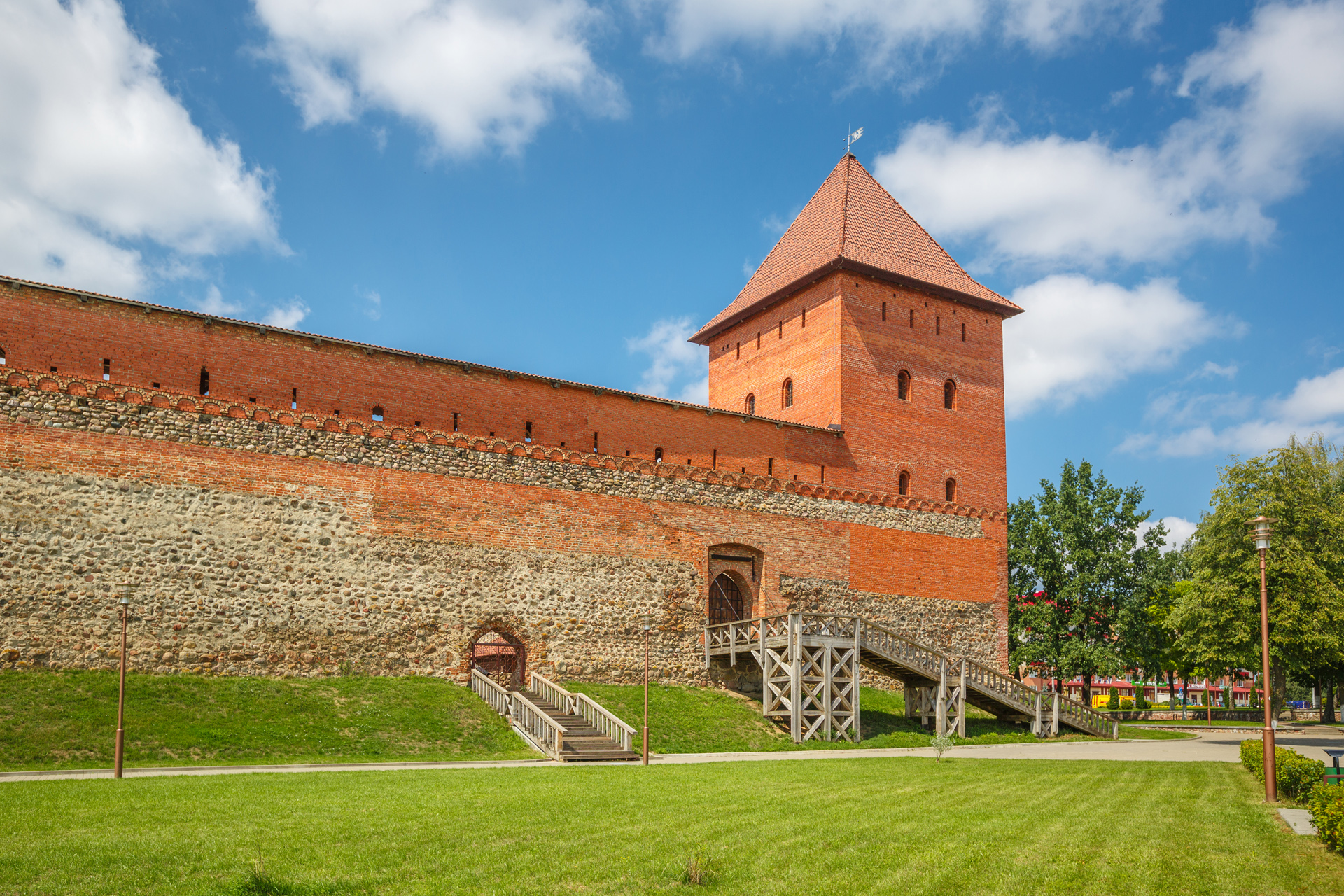
Lida castle today is an all-season tourist attraction, drawing thousands of visitors every year.
During the summer, knights’ tournaments are regularly held in this Belarus castle. In the winter time the inner yard of the castle, an area 80m by 80m, is converted into an ice-skating rink.
오늘날의 리다 성은 매년 수천 명의 관광객을 끌어들이는 사계절 관광 명소이다.
여름 동안, 나이츠 토너먼트(knights’ tournament) 정기적으로 리다 성 안의 벨라루스 성에서 열린다. 겨울에는 성 안마당, 가로 80m, 세로 80m의 면적이 스케이트장으로 바뀐다.
Kossovo Castle
XIX c.
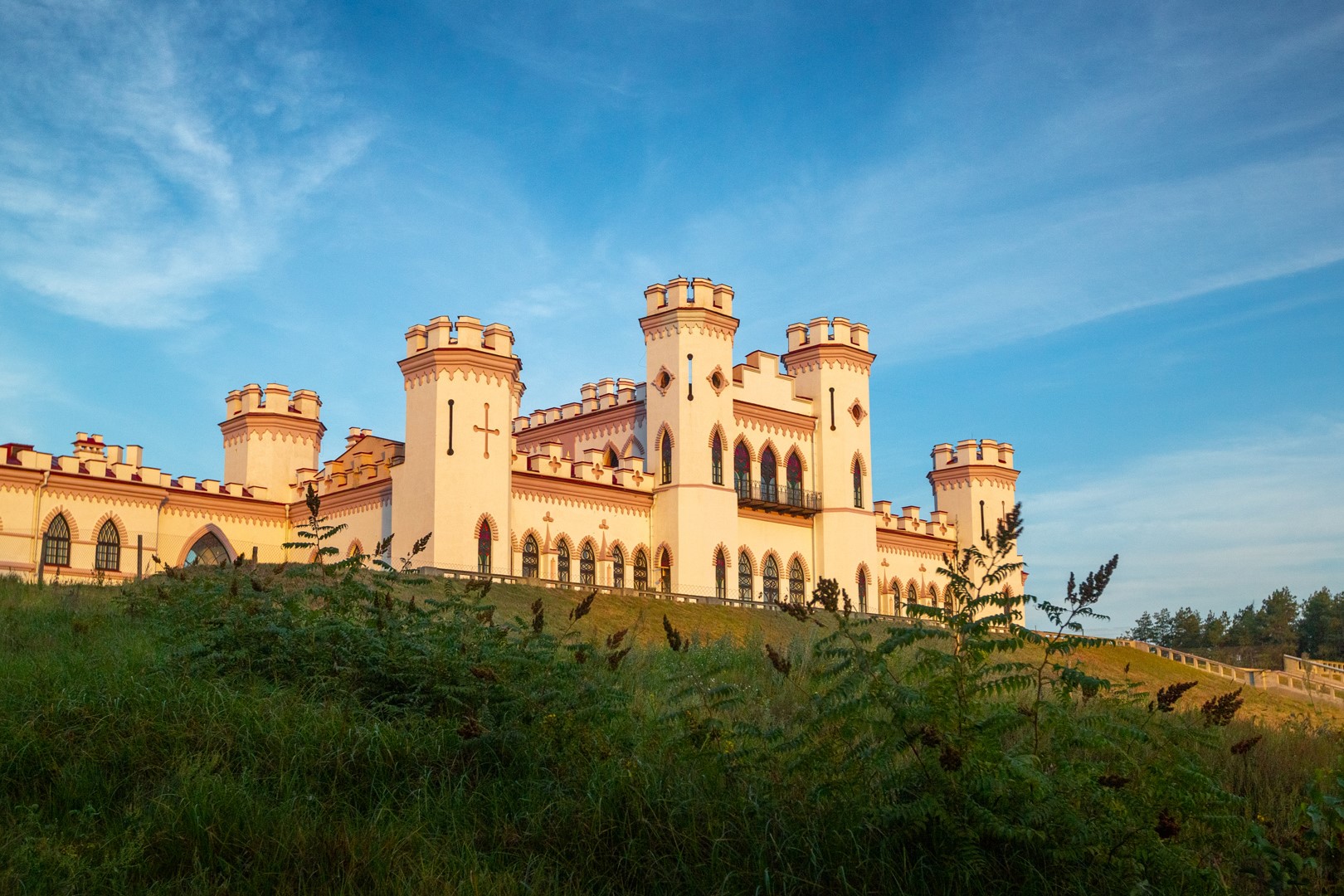
The Puslovskies’ palace, also called Kossovo castle, is an amazing in its beauty residence, such as Mirsky castle and the palace and park complex in Nesvizh. This fine example of neo-Gothic architecture of the XIX century, striking with grandeur and power of the castle walls even now, is also known under such names as “Knight's dream” and “Miniature castle”.
A prominent military and political leader Tadeusz Kosciuszko was born not far from Kossovo, these lands’ owners the Puslovskies were very proud of it. They restored the small motherland of Poland and the United States national hero at their own expense, giving thereby honour and recognizing its merits.
코소보 성이라고도 불리는 푸슬롭스키 궁전(Puslovskies’ palace) 은 미르스키 성과 네스비지의 궁전과 궁전 콤플렉스와 같은 아름다운 궁전 콤플렉스이다. 지금도 성벽의 웅장함과 힘이 돋보이는 19세기 신고딕 건축의 훌륭한 예시인 코소보 성은 "기사의 꿈"과 "미니어처 성"이라는 이름으로도 알려져 있다.
유명한 군사, 정치 지도자인 타데우시 코시치우슈코(Tadeusz Kosciuszko)는 코소보 성에서 멀지 않은 곳에서 태어났으며, 이 땅의 주인인 푸슬로프스키 가문 사람들은 그것을 매우 자랑스러워했다. 그들은 자신들의 비용으로 폴란드의 작은 조국과 미국의 국가 영웅을 복원하여 명예를 주고 그 가치를 인정했다.

The estate of Tadeusz Kosciuszko in Kossovo is a well-known landmark of Belarus, which can still be seen today, having arrived on an excursion to Kossovo.
타데우시 코시치우슈코의 사유재산이었던 코소보 성은 코소보 지역으로 여행 온 관광객들의 유명한 랜드마크이기도 하다.
Krevo Castle
XIV c.
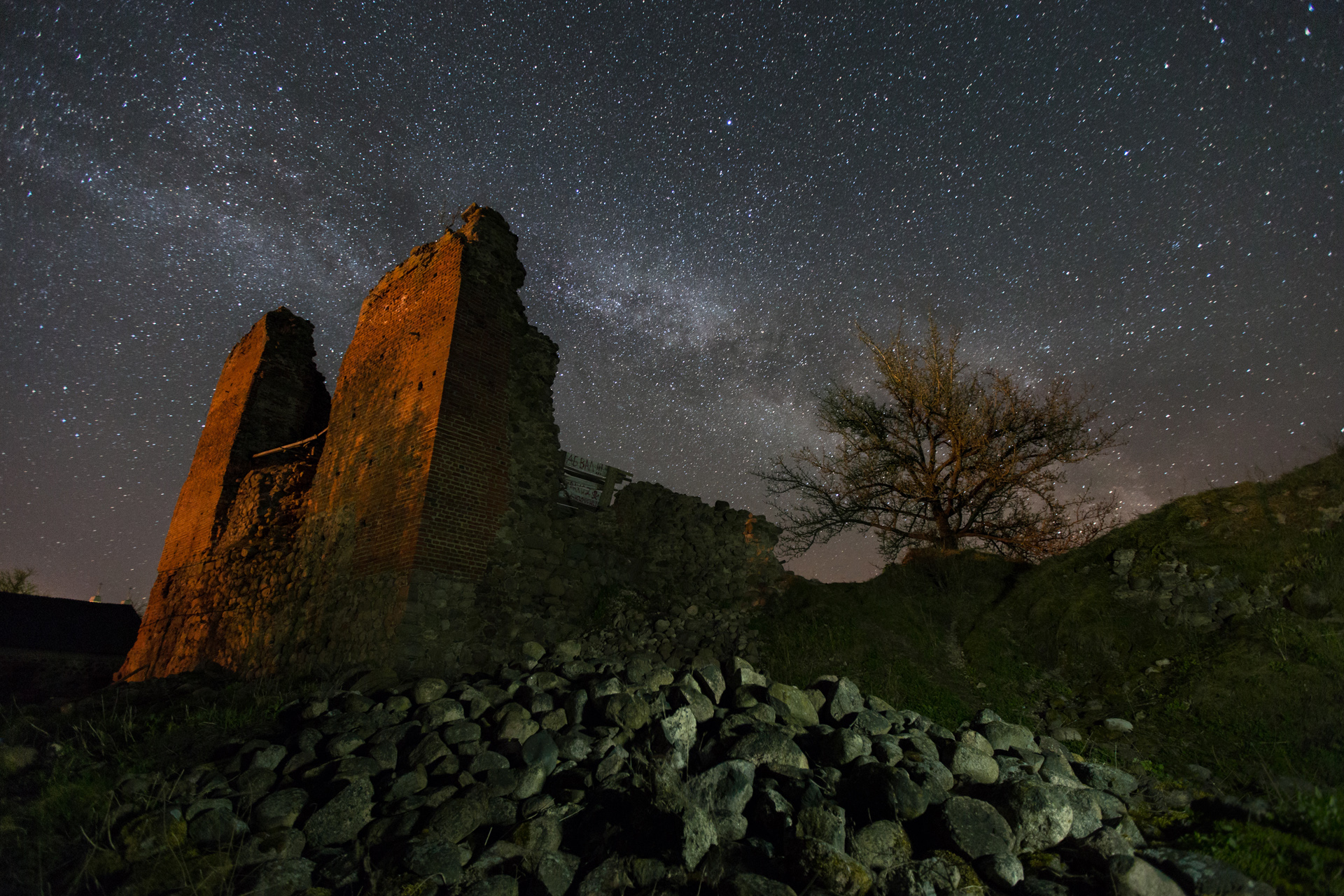
Krevo settlement is known among all of the country’s residents due to its valuable historical sight, which attracts tourists. It is Krevo castle – the most ancient building, dated to the XIV century.
Krevo castle has a rich and interesting history, which is filled with lots of events. Not only good events but also, alas, unpleasant ones took place in its walls. In 1382, one of the great princes Keystut was killed there. In three years, in 1385, Poland and the Great Duchy of Lithuania signed the Union of Krevo in the castle.
XVI century was hard times for Krevo castle, at that period, it was besieged by Moscow and Tatar troops now and then.
Starting with the XIX century, the castle was ceased to be a defensive structure and was abandoned as useless. During the World War I, walls of the construction were greatly damaged and it led the castle to a miserable condition of ruins, which were suspended in 1929.
크레보 마을은 관광객들을 끌어들이는 귀중한 역사적 경관으로 인해 모든 주민들 사이에 알려져 있다. 바로 14세기에 지어진 가장 오래된 건물인 크레보 성이다.
크레보 성은 풍부하고 흥미로운 역사를 가지고 있어 많은 행사들로 가득 차 있다. 역사의 희극과 비극 모두가 그 속에서 일어났다. 1382년에 위대한 왕자들 중 한 명인 케이쉬투트(Keysstu)가 그곳에서 살해되었던 것처럼 말이다.
1385년 폴란드와 리투아니아 대공국은 크레보 지역에서 동맹을 맺었다.
16세기는 크레보 성에게 힘든 시기였고, 모스크바와 타타르 군대에 의해 때때로 포위되었다.
19세기부터 성곽은 더이상 방어적인 건축물로 쓰이지 않게 되었고 버려지게 되었다. 제1차 세계 대전 중에 성벽은 크게 손상되었고, 1929년 이후 비참하게 파괴된 상태로 성을 이끌었다.
Gomel Palace
XVIII c.
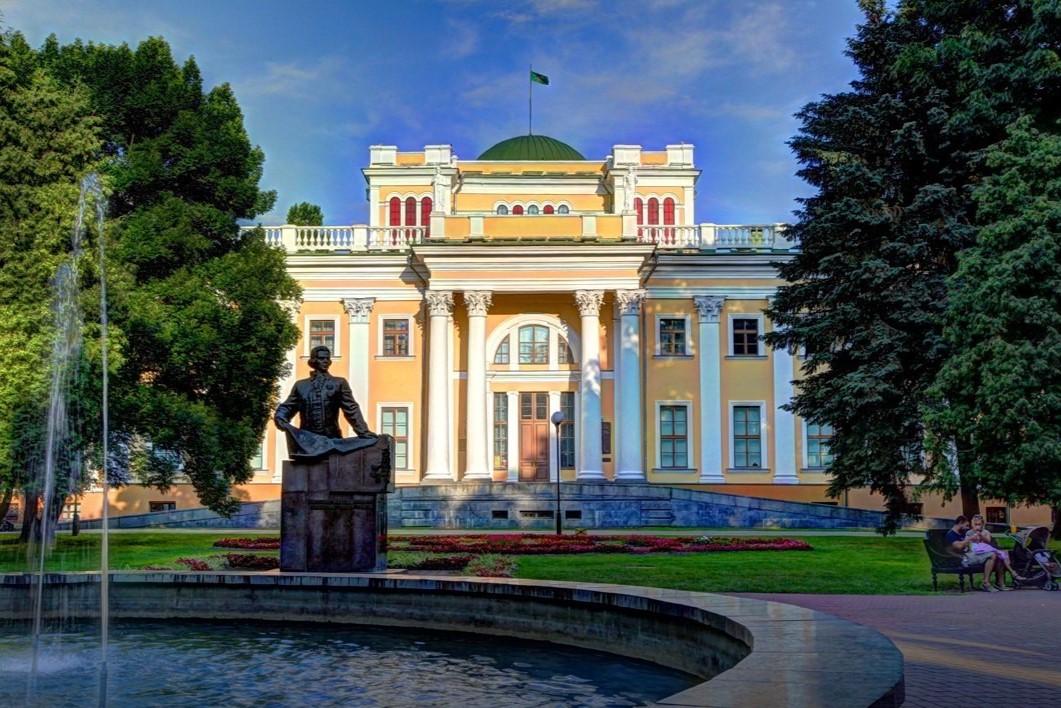
At the end of the 18th century, Gomel lands were a part of the Russian Empire. Then the Empress Catherine II presented these lands to her favorite — General Peter Rumyantsev-Zadunaisky. In a year of 1777 it was decided to begin the palace construction works.
Like many other architectural monuments, the palace was destroyed and rebuilt several times. It suffered particularly severely during the mutiny in 1919 and during the Great Patriotic War. At different times there was a library, a club, a museum, a puppet theater in the building of the palace.
18세기 말, 고멜 지역은 러시아 제국의 일부였다. 예카테리나 2세 황제는 이 지역을 그녀가 가장 좋아하는 장군인 페테르 루미안체프 자두나이스키(Peter Rumyantsev-Zadunaisky)에게 선물했다. 이후 1777년, 고멜 궁전의 공사가 시작되었다.
다른 많은 건축 기념물들처럼, 고멜 궁전은 여러 번 파괴되고 재건되었다. 특히1919년의 혁명과 대애국전쟁 동안 극심한 고통을 겪었다. 다른 시기에 궁전 건물에는 도서관, 클럽, 박물관, 인형극장이 있었다.
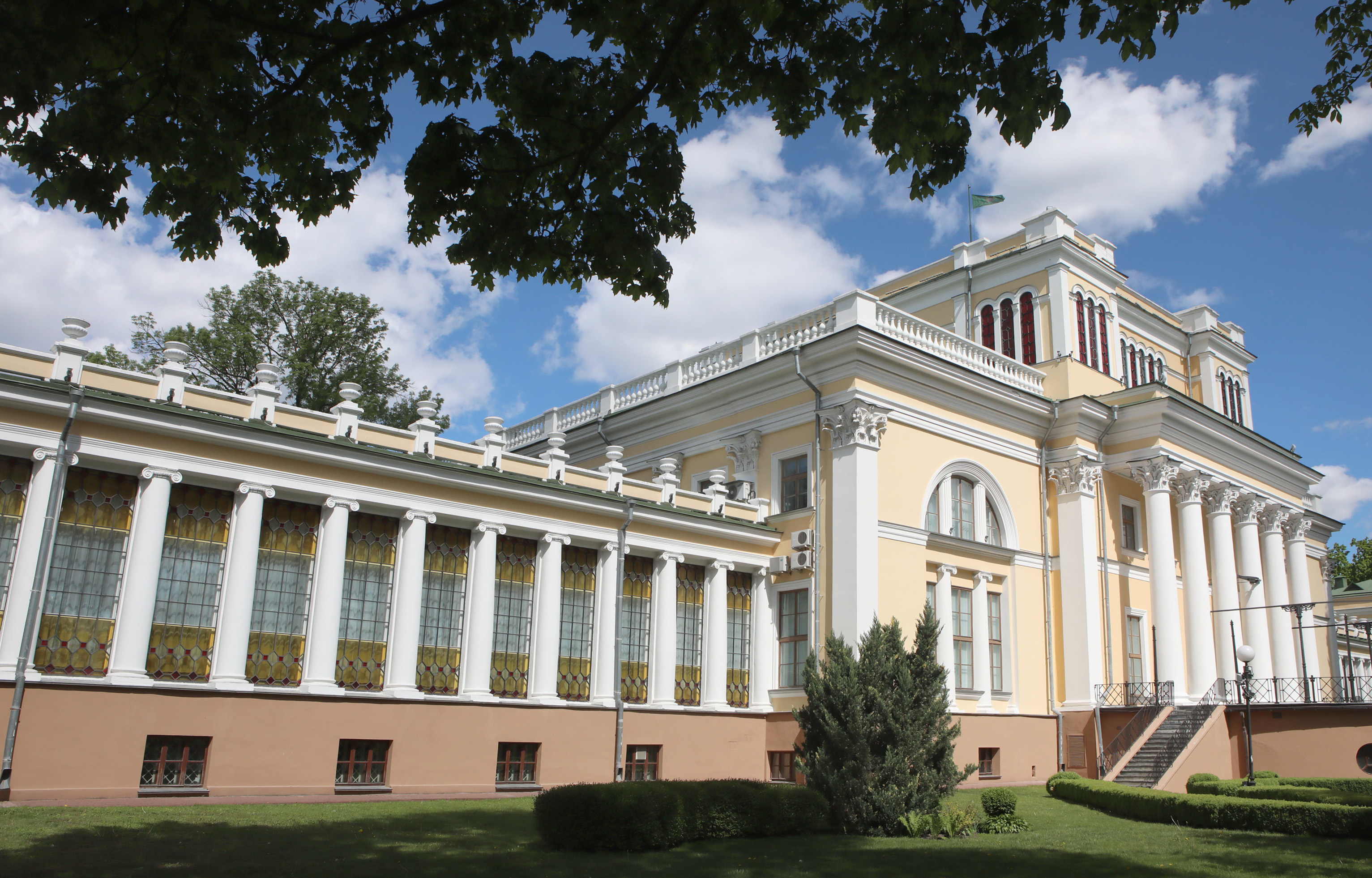
Today the palace keeps many relics of the past: archaeological and ethnographic items, a numismatic collection, a collection of ancient books, icons, and much more, which helps us to get to know the history of the whole estate more deeply.
In 2012, Gomel Residence of the Rumyantsev-Paskevich became the owner of the Grand Prix in the contest “Museums of Belarus – to the third millennium”.
오늘날 그 궁전은 고고학,민족학적 유물, 화폐 수집품, 고서적, 아이콘 등 과거의 많은 유물들을 보관하고 있는데, 이것은 우리가 전체 유산의 역사를 더 깊이 알 수 있도록 도와준다.
2012년 고멜 성은 "벨라루스 박물관 — 3천년까지"라는 콘테스트에서 그랑프리의 상을 수상하게 되었다.
DISCOVER MORE WITH THE HELP OF YOUR GUIDE TO BELARUSIAN ARCHITECTURAL TREASURES
‘벨라루스 건축물에 대한 가이드’를 참고해 더 많은 것을 확인해보세요